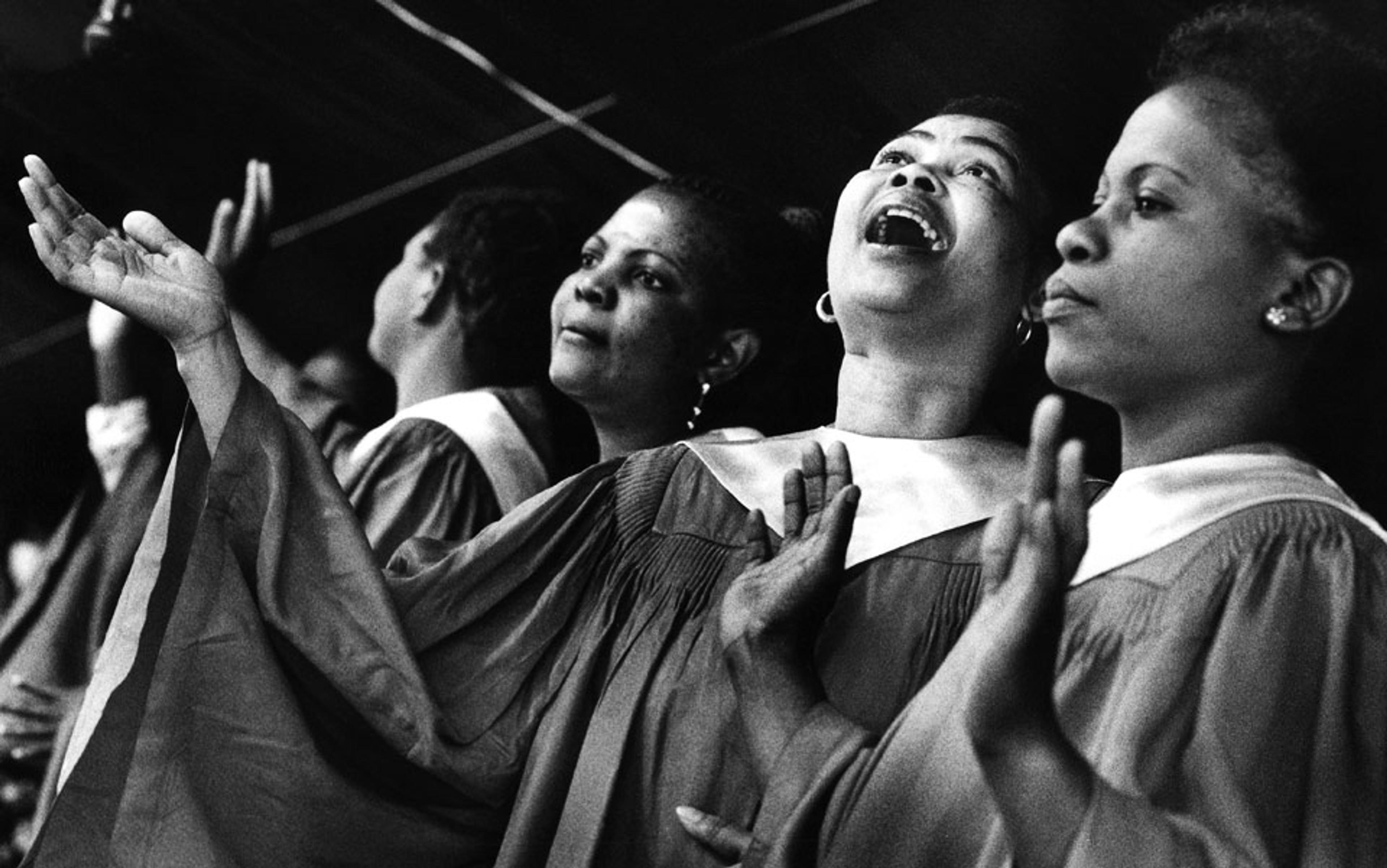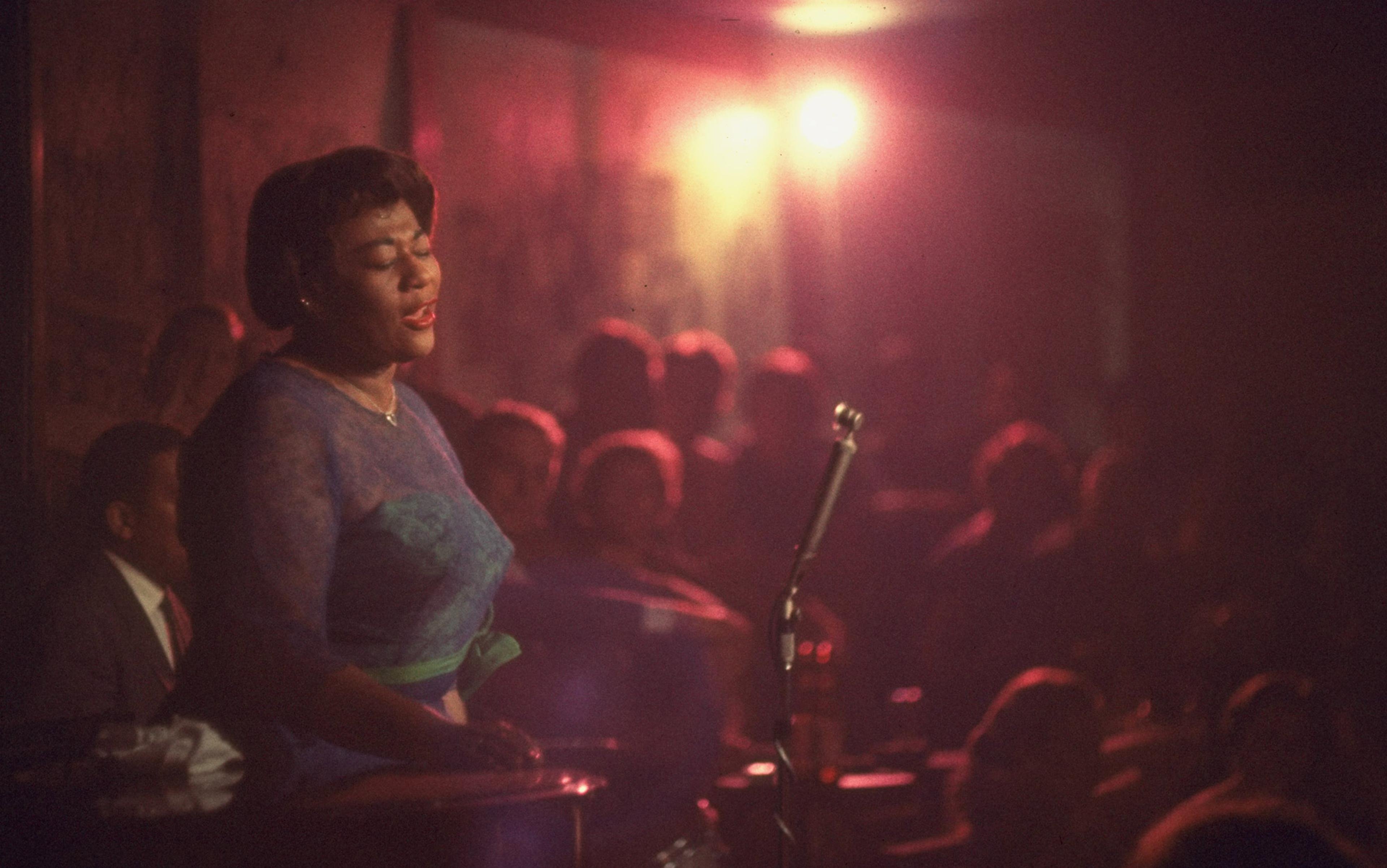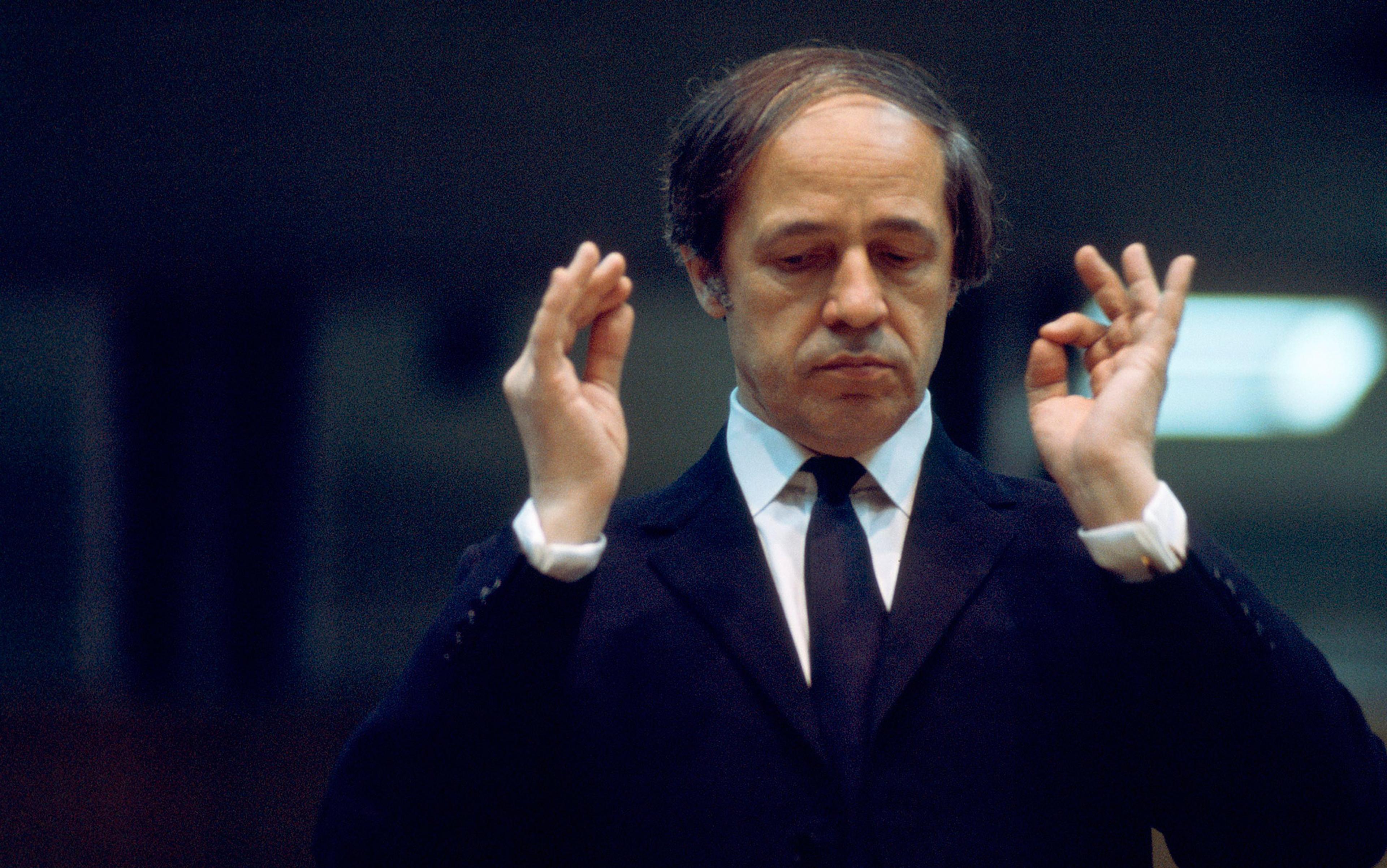What is music? There’s no end to the parade of philosophers who have wondered about this, but most of us feel confident saying: ‘I know it when I hear it.’ Still, judgments of musicality are notoriously malleable. That new club tune, obnoxious at first, might become toe-tappingly likeable after a few hearings. Put the most music-apathetic individual in a household where someone is rehearsing for a contemporary music recital and they will leave whistling Ligeti. The simple act of repetition can serve as a quasi-magical agent of musicalisation. Instead of asking: ‘What is music?’ we might have an easier time asking: ‘What do we hear as music?’ And a remarkably large part of the answer appears to be: ‘I know it when I hear it again.’
Psychologists have understood that people prefer things they’ve experienced before at least since Robert Zajonc first demonstrated the ‘mere exposure effect’ in the 1960s. It doesn’t matter whether those things are triangles or pictures or melodies; people report liking them more the second or third time around, even when they aren’t aware of any previous exposure. People seem to misattribute their increased perceptual fluency – their improved ability to process the triangle or the picture or the melody – not to the prior experience, but to some quality of the object itself. Instead of thinking: ‘I’ve seen that triangle before, that’s why I know it,’ they seem to think: ‘Gee, I like that triangle. It makes me feel clever.’ This effect extends to musical listening. But evidence has been accumulating that something more than the mere exposure effect governs the special role of repetition in music.
To begin with, there’s the sheer amount of it. Cultures all over the world make repetitive music. The ethnomusicologist Bruno Nettl at the University of Illinois counts repetitiveness among the few musical universals known to characterise music the world over. Hit songs on American radio often feature a chorus that plays several times, and people listen to these already repetitive songs many times. The musicologist David Huron at Ohio State University estimates that, during more than 90 per cent of the time spent listening to music, people are actually hearing passages that they’ve listened to before. The play counter in iTunes reveals just how frequently we listen to our favourite tracks. And if that’s not enough, tunes that get stuck in our heads seem to loop again and again. In short, repetition is a startlingly prevalent feature of music, real and imagined.
In fact, repetition is so powerfully linked with musicality that its application can dramatically transform apparently non-musical materials into song. The psychologist Diana Deutsch, at the University of California, San Diego, discovered a particularly powerful example – the speech-to-song illusion. The illusion begins with an ordinary spoken utterance, the sentence ‘The sounds as they appear to you are not only different from those that are really present, but they sometimes behave so strangely as to seem quite impossible.’ Next, one part of this utterance – just a few words – is looped several times. Finally, the original recording is represented in its entirety, as a spoken utterance. When the listener reaches the phrase that was looped, it seems as if the speaker has broken into song, Disney-style.
The speech-to-sound illusion, discovered by Diana Deutsch, UC San Diego. To experience the illusion, play the two recordings in sequence. Credit: Diana Deutsch
The transformation is truly bizarre. You’d think that listening to someone speak and listening to someone sing were separate things, distinguished by the objective characteristics of the sound itself. It seems obvious: I hear someone speak when she’s speaking, and sing when she’s singing. But the speech-to-song illusion reveals that the exact same sequence of sounds can seem either like speech or like music, depending only on whether it has been repeated. Repetition can actually shift your perceptual circuitry such that the segment of sound is heard as music: not thought about as similar to music, or contemplated in reference to music, but actually experienced as if the words were being sung.
This illusion demonstrates what it means to hear something musically. The ‘musicalisation’ shifts your attention from the meaning of the words to the contour of the passage (the patterns of high and low pitches) and its rhythms (the patterns of short and long durations), and even invites you to hum or tap along with it. In fact, part of what it means to listen to something musically is to participate imaginatively.
When they’re being heard as music, the two words – ‘sometimes behave’ – in Deutsch’s recording contain the next two words – ‘so strangely’ – almost inevitably within them. Try listening to the original utterance again and pausing it after the words ‘sometimes behave’: unable to resist completing the pattern, your mind automatically offers the continuation ‘so strangely’. When you hear something as music, you aren’t so much listening to as listening along with.
Repetition is the key to this participatory aspect of music. My own lab at the University of Arkansas did some research using rondos, a repetitive kind of musical composition that was particularly popular in the late 18th century. In our study, people who had heard classical rondos featuring exact repetition reported more of a tendency to tap or sing along than those who had heard rondos that varied the refrain a little. Then again, classical rondos provide very little opportunity for audience participation, and it’s notable that musical situations that expressly call for broad involvement generally feature even more repetition – think of the number of times a church responsorial calls on the congregation to sing a single phrase back. Even in the many ordinary musical situations that don’t expressly call for participation (listening to the radio while driving along, for instance), people still get involved in ways that range from subtle swaying to air guitar to full-voiced singing along.
Can music exist without repetition? Well, music is not a natural object and composers are free to flout any tendency that it seems to exhibit. Indeed, over the past century, a number of composers expressly began to avoid repetitiveness in their work. In a recent study at the Music Cognition lab, we played people samples of this sort of music, written by such renowned 20th-century composers as Luciano Berio and Elliott Carter. Unbeknownst to the participants, some of these samples had been digitally altered. Segments of these excerpts, chosen only for convenience and not for aesthetic effect, had been extracted and reinserted. These altered excerpts differed from the original excerpts only in that they featured repetition.
The altered excerpts should have been fairly cringeworthy; after all, the originals were written by some of the most celebrated composers of recent times, and the altered versions were spliced together without regard to aesthetic effect. But listeners in the study consistently rated the altered excerpts as more enjoyable, more interesting, and – most tellingly – more likely to have been composed by a human artist rather than randomly generated by a computer. The listeners in the study were college undergraduates with no special training or experience in contemporary art music.
A phrase that sounded arbitrary the first time might come to sound purposefully shaped and communicative the second
Even so, when I presented these findings at the annual meeting of the Society for Music Theory in 2011, to an audience that was uncommonly well-versed in these repertoires, some people were surprised to find that the doctored versions possessed an elevated degree of persuasiveness, even to them, and even when they knew what they were hearing. Admittedly, this study does not address the specially cultivated listening habits of the cognoscenti, but it does reveal something about the way listeners make sense of music that is new to them. Repetition serves as a handprint of human intent. A phrase that might have sounded arbitrary the first time might come to sound purposefully shaped and communicative the second.
A separate study in my lab tested whether repetition could also make snippets of music sound more musical. We generated random sequences of notes and presented them to listeners in one of two conditions: original or looped. In the looped condition, the random sequence played not once but six times in a row. At the start of the study, people listened to the sequences, which played automatically, one after the other. Some were in their original form and some were looped (it varied from participant to participant which sequence was heard in what form). Later, the test subjects heard each random sequence individually – once only, without repeats – and then rated how musical it sounded.
They had heard enough sequences that they all tended to blend together; they didn’t explicitly remember which segments they’d heard as loops, or even whether they’d previously heard the sequence at all. Nevertheless, they consistently found the sequences to be more musical when they’d heard them in looped form. Even without the aid of explicit memory, the repetitions of the random sequences had imbued them with a sense of musicality. No matter the constituent material, whether it’s strings of syllables or strings of pitches, it seems that the brute force of repetition can work to musicalise sequences of sounds, triggering a profound shift in the way we hear them.
To get a sense of how the process works, there’s a very simple trick you can try. Ask an indulgent friend to pick a word – lollipop, for example – and keep saying it to you for a couple minutes. You will gradually experience a curious detachment between the sounds and their meaning. This is the semantic satiation effect, documented more than 100 years ago. As the word’s meaning becomes less and less accessible, aspects of the sound become oddly salient – idiosyncrasies of pronunciation, the repetition of the letter l, the abrupt end of the last syllable, for example. The simple act of repetition makes a new way of listening possible, a more direct confrontation with the sensory attributes of the word itself.
Anthropologists might feel that they are on familiar ground here, because it is now understood that rituals – by which I mean stereotyped sequences of actions, such as the ceremonial washing of a bowl – also harness the power of repetition to concentrate the mind on immediate sensory details rather than broader practicalities. In the case of the bowl-washing, for example, the repetition makes it clear that the washing gestures aren’t meant merely to serve a practical end, such as making the bowl clean, but should rather serve as a locus of attention in themselves.
In 2008, the psychologists Pascal Boyer and Pierre Liénard at Washington University in St Louis went so far as to claim that ritual creates a distinct attentional state in which we consider actions on a much more basic level than usual. Outside of ritual, individual gestures aren’t usually interpreted on their own terms; they are absorbed into our understanding of the larger flow of events. Ritual shifts attention from the overall pattern of events toward their component gestures. Instead of noting only that a bowl is being cleaned, the witness to a ritual might notice the acceleration of the hand across the bowl’s edge during each wiping gesture, or the way the cloth bunches and then opens as it is dragged forward and back across the surface. What’s more, the repetition of gestures makes it harder and harder to resist imaginatively modelling them, feeling how it might be to move your own hand in the same way. This is precisely the way that repetition in music works to make the nuanced, expressive elements of the sound increasingly available, and to make a participatory tendency – a tendency to move or sing along – more irresistible.
our brains show more activity in their emotional regions when the music we are listening to is familiar, regardless of whether or not we actually like it
Given these similarities, it should be no surprise that many rituals actually depend on music. And music does seem to be a potently mind-expanding tool in its own right. The Swedish psychologist Alf Gabrielsson asked thousands of people to describe their most powerful experiences with music, then searched their responses for common themes. Many people reported that their peak musical experiences involved a sense of transcendence, of dissolved boundaries where they seemed to escape the limitations of their bodies and become one with the sounds they were hearing. These very deep and moving experiences can be partially explained by the shift in attention and the heightened sense of involvement brought about by repetition. Indeed, the psychologist Carlos Pereira and his colleagues at the University of Helsinki demonstrated that our brains show more activity in their emotional regions when the music we are listening to is familiar, regardless of whether or not we actually like it.
Even involuntary repetition, quite against our own musical preferences, is powerful. This is why music that we hate but that we’ve heard again and again can sometimes engage us unwillingly; why we can find ourselves on the bus enthusiastically grooving along until we realise that we’re actually listening to We Built This City by Starship. Repeated exposure makes one sound seem to connect almost inevitably to the next, so that when we hear ‘What is love?’, ‘Baby, don’t hurt me’ immediately plays through our minds. Few spoken utterances contain this irresistible connection between one part and the next. And when we do want bits of speech to be tightly bound in this way – if we’re memorising a list of the presidents of the United States, for example – we might set it to music, and we might repeat it. Listening seems musical when the current bit of sound feels like it’s inextricably pulled to the next bit of sound. Repetition intensifies this effect.
Can you make anything into music just by repeating it? No, there seems to be something special about sound. The few studies that have transferred musical devices, such as rhythm, repetition, and periodicity, to non-auditory domains – flashing lights, for example – suggest that the distinctive kinds of mental processing associated with music are harder to elicit when the basic material isn’t sonic.
It’s also worth pointing out that there are many aspects of music not illuminated by repetition. It might be possible to transform speech into song, but a single bowed note on a violin can also sound unambiguously musical without any special assistance. Repetition can’t explain why a minor chord sounds dark or a diminished chord sounds sinister. Still, it might be able to explain why a series of these chords can come to sound rousing and inevitable.
By tracing and retracing a path through musical space, repetition makes a sequence of sounds seem less like an objective presentation of content and more like a kind of tug that’s pulling you along. It captures sequencing circuitry that makes music feel like something you do rather than something you perceive. This sense of identification we have with music, of listening with it rather than to it, so definitional to what we think about as music, also owes a lot to repeated exposure.
The stunning prevalence of repetition in music all over the world is no accident. Music didn’t acquire the property of repetitiveness because it’s less sophisticated than speech, and the 347 times that iTunes says you have listened to your favourite album isn’t evidence of some pathological compulsion – it’s just a crucial part of how music works its magic. Repetitiveness actually gives rise to the kind of listening that we think of as musical. It carves out a familiar, rewarding path in our minds, allowing us at once to anticipate and participate in each phrase as we listen. That experience of being played by the music is what creates a sense of shared subjectivity with the sound, and – when we unplug our earbuds, anyway – with each other, a transcendent connection that lasts at least as long as a favourite song.






